Rock climbing is one of the most exhilarating and adventurous sports around. But to make the most of it, you need the right equipment—and to know how to use it.
Looking to scale a cliff face but don’t know how to do it safely? Here’s our comprehensive rock climbing equipment list.
Climbing ropes
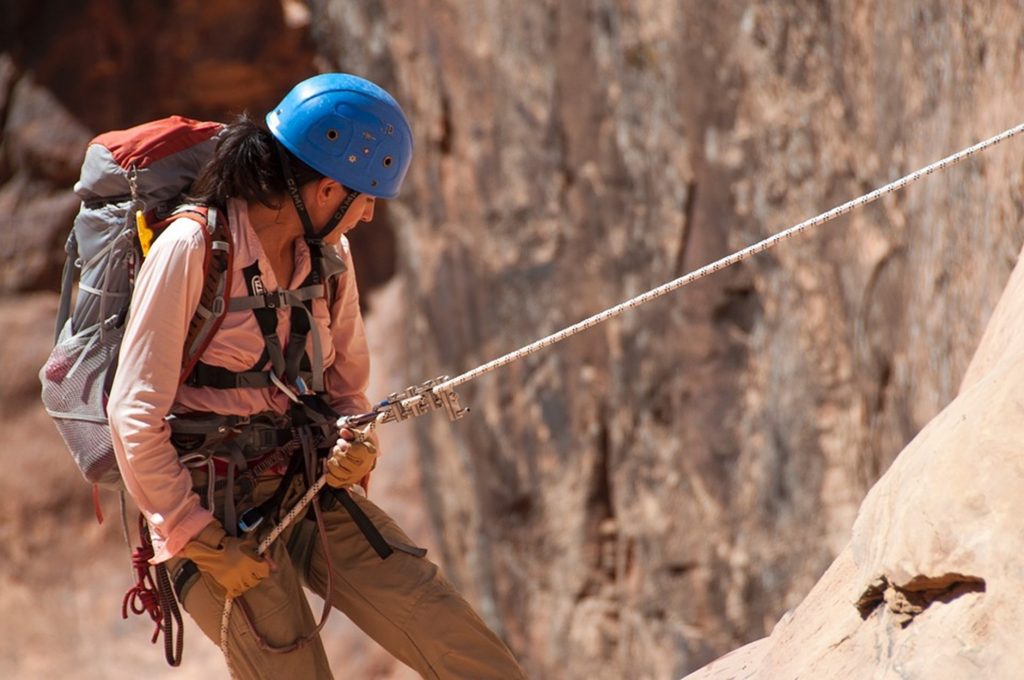
Climbing ropes are the single most important piece of rock climbing equipment. There are only a couple of instances in which a climber wouldn’t need them:
- when they’re bouldering—typically climbing no more than 15ft, with a crashmat underneath for safety
- when they’re free soloing, which only a fraction of climbers worldwide even pursue
Ropes are an essential part of the sport for every other type of climbing. With proper use of your harness, carabiners, belay device, quickdraws, and cams, climbing ropes will save your life if you slip or fall off the rock face.
It isn’t enough to own climbing ropes, though. You must also know how they function and work with the associated apparatus. Most indoor bouldering gyms or climbing centres have dedicated belay systems for rope climbing and offer tutorials so you can get to grips with them.
Once you become more experienced and want to buy your own rope, there are several factors you need to consider. For example:
- rope type
- diameter
- length
- rope features
- safety ratings
It would be best if you decided upon the above relative to the route you intend to climb. You should also remember that too much rope can be an issue, as it can lead to drag on the wall.
Harness
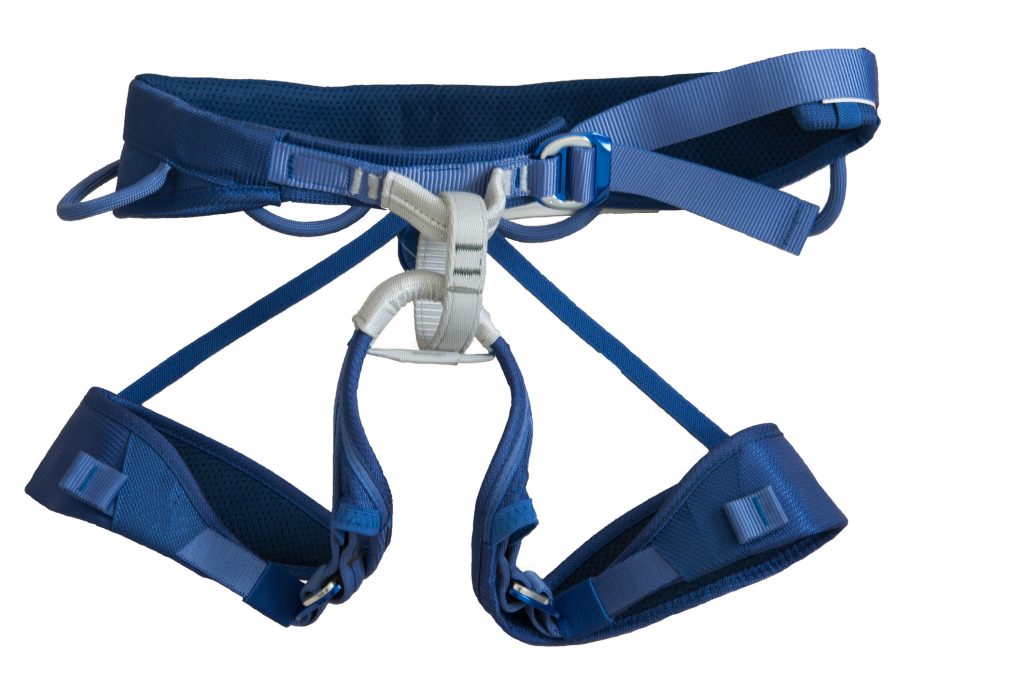
If you’ve bought a suitable climbing rope, you’ll need an appropriate safety harness to attach it to. There are two primary considerations here:
- how much you want to spend
- what type of climbing you intend to do
Whether you’re into trad, sport, winter, or indoor climbing, versatility and comfort should be your primary focus if you want a catch-all harness to serve you in multiple climbing disciplines.
When purchasing your rock climbing gear, this is also the approach we recommend—you want to own equipment you use regularly. You can always hire anything more specific if you need it.
Ideally, your harness should comfortably work with your clothing to ensure a full range of movement. Padding, extra-wide webbing, ventilation, and moisture transport are some key features to look for.
As for a harness’s anatomy, it contains two front tie-in points where the climber can thread the rope and tie it in—one at the waist (the belay loop) and one at the leg loops. The waist belt fastens (yep, you guessed it) around your waist.
Given that a harness is designed to keep you safe, you need to examine the harness for defects or damage even when buying one new.
Belay device
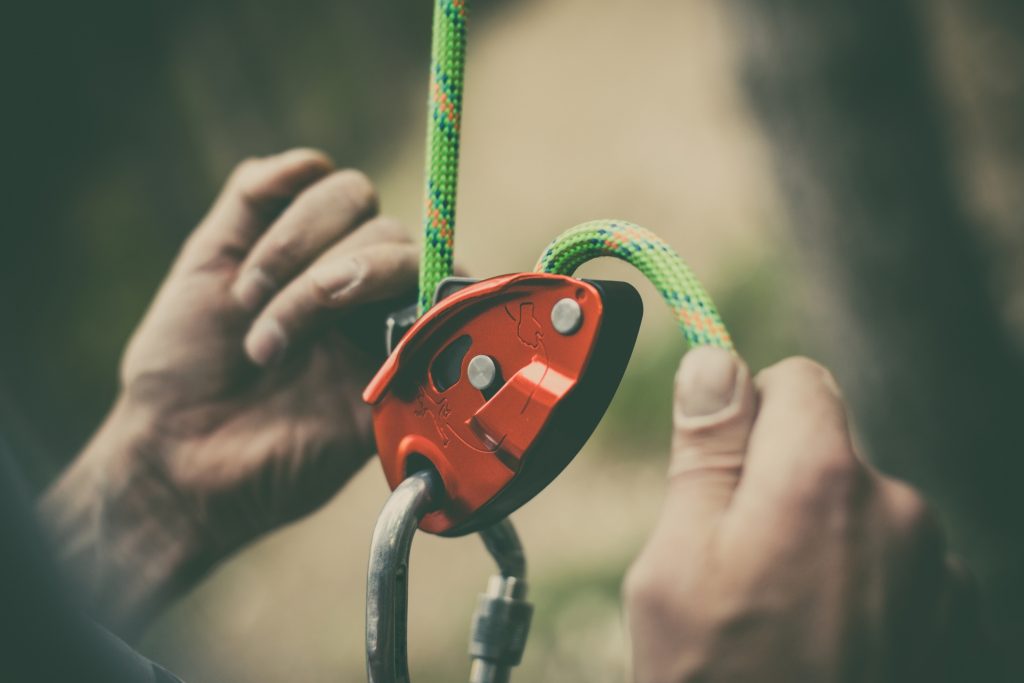
If they don’t own one already, a belay device is one of the first pieces of rock climbing hardware a trad or sport climber will buy when planning a climb.
If you haven’t heard of a belay device before, it’s a mechanical friction brake used to protect climbers from falls or lower them from an ascent. The belay provides multiple friction points, meaning the belayer doesn’t have to hold the climber’s full weight as they descend.
It doesn’t take long to get to grips with the basic function of a belay. However, we highly recommend practising in a controlled environment first, particularly with help from a climbing instructor.
It isn’t so much that the device is complicated to understand. Rather, the consequences of inattention are grave, so you’ll want to know it inside and out.
In some cases, like in a climbing gym, the belay device you’re fastening your rope to might be mechanical. But in most cases, it’ll be another person.
There are three types of belay devices to choose from, depending on the climbing you want to do:
- tubular
- assisted-breaking
- figure 8
Carabiners
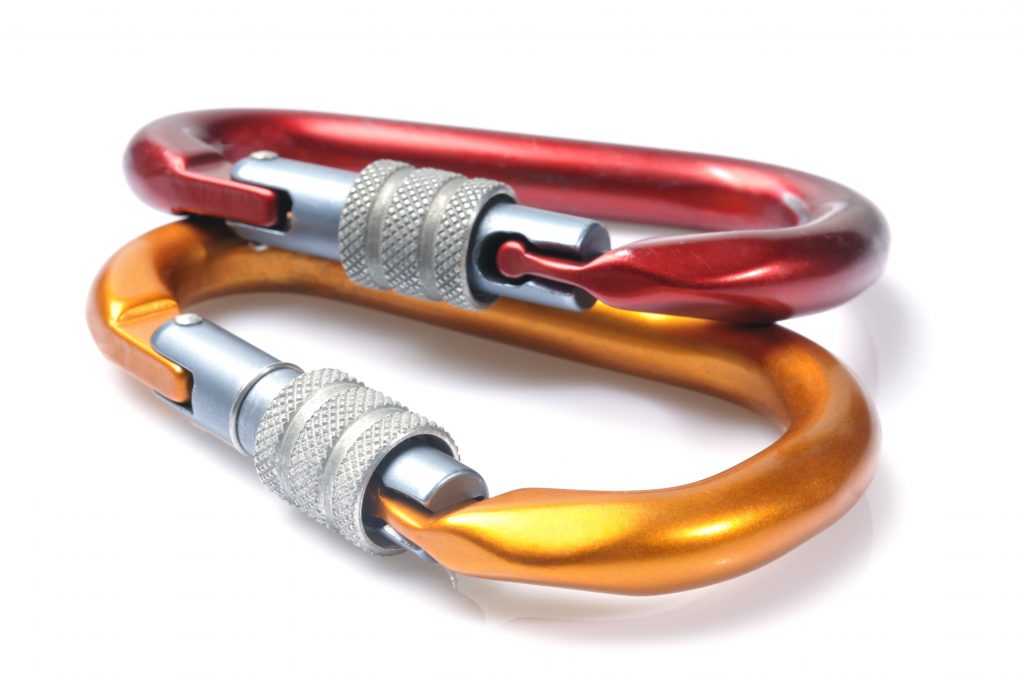
A carabiner is essentially the name for a ‘climbing clip’. In simple terms, it’s a device to which you can attach things without fear of them becoming detached.
So, in climbing, they’re used for all sorts of purposes, such as connecting climbing rope with other pieces of climbing protection such as nuts, camming devices, and bolts.
They’re usually made from steel rigorously tested for strength and feature a gate to allow your rope or equipment to pass through. This gate then shuts to prevent the equipment from slipping out of the carabiner.
Carabiners, ropes, and your harness are usually the crucial pieces of rock-climbing equipment that stand between safety and serious injury.
For this reason, you should invest in carabiners with long-standing reputations for quality and strength, such as those made by Petzl, Black Diamond, or the Tommy Caldwell endorsed Eldelrid.
There are several carabiners, including:
- the wire carabiner
- the straight gate carabiner
- the locking carabiner
There are other types, but they largely fall between those three, with minor variations.
Quickdraws
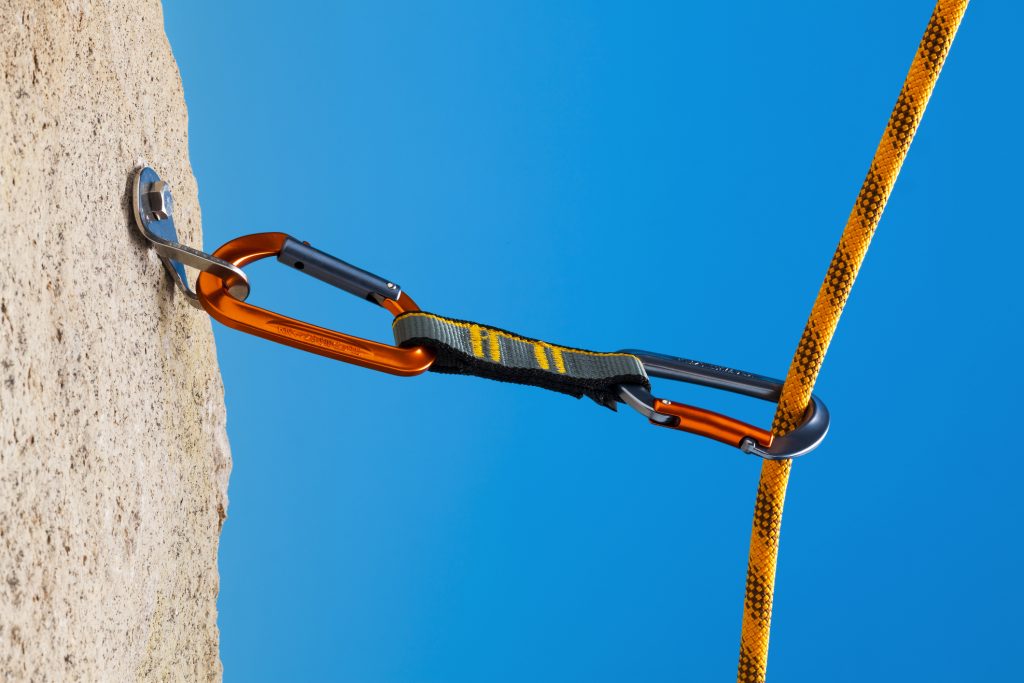
We did say carabiners are used for all sorts of things in rock climbing—one of these is the quickdraw. It’s made from two carabiners connected by a textile sling.
The idea is to attach one end of the quickdraw carabiner to a bolt hanger on a route and your rope to the other. This gives you some slack on the rope by allowing the rope to move around while remaining attached to the bolt hanger.
As with other forms of rock climbing equipment, though, the purpose of a quickdraw varies depending on the climbing you’re doing.
Climbing cams
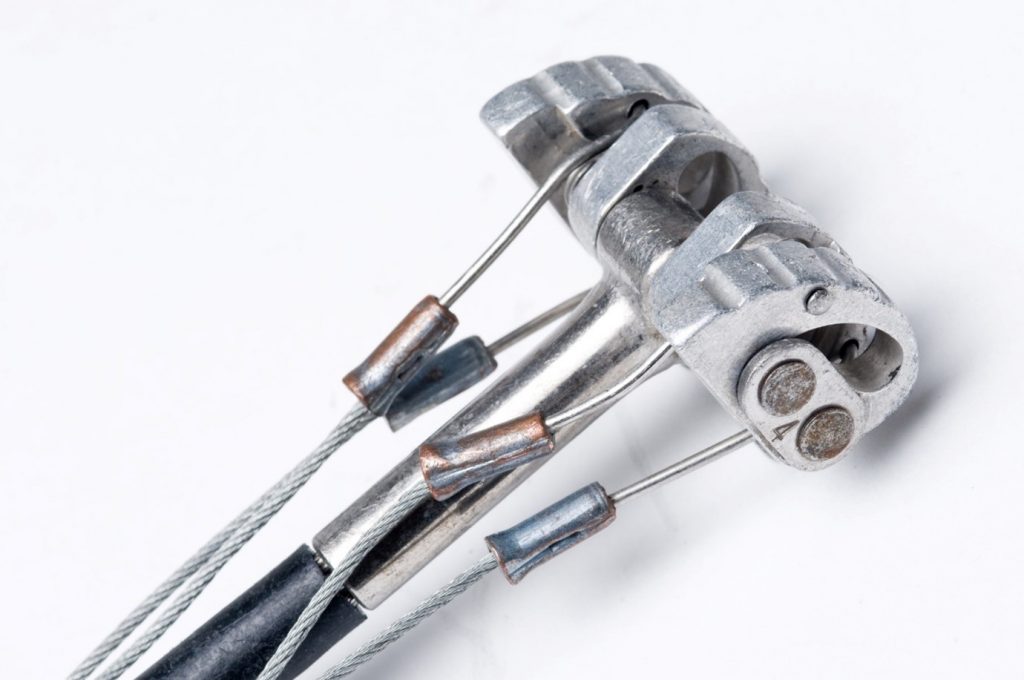
Climbing cams—or spring-loaded camming devices (SLCDs)—fit into cracks and gaps in rocks where they’ll grip to provide protection.
Cams are particularly useful in trad climbing where a nut or bolt won’t work. With that in mind, cams offer a little more flexibility in the route you can take up a rock face, and they’re commonplace in every outdoor rock climber’s arsenal of tools.
The basic mechanism of a cam is that the harder you pull on it, the farther it spreads apart, thereby gripping the walls of the crack you’ve placed it in. It’s more of an advanced piece of rock climbing gear but essential nonetheless.
Another advantage of a cam is that it’s a non-invasive form of climbing protection—it doesn’t damage the rock when used, like bolting or pitons.
Incidentally, this philosophy of conservation and ethical climbing is held by climbing pioneer and Yosemite big wall legend Yvon Chouinard who founded the outdoors clothing company Patagonia, amongst other achievements.
Climbing helmet
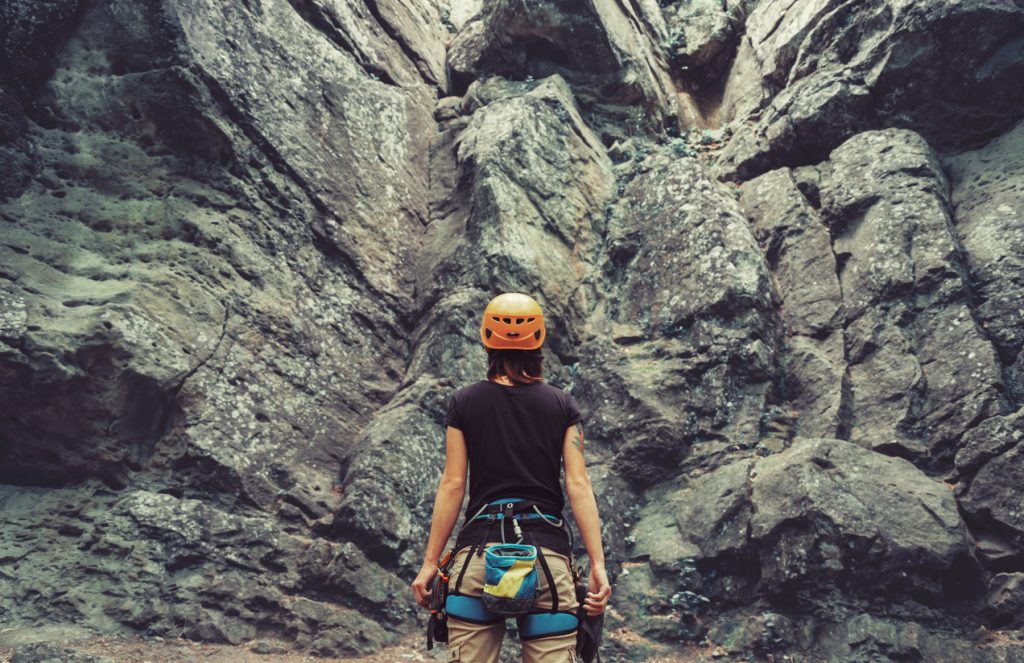
Rock faces and mountains occasionally have a habit of spontaneously fracturing, sending stones, rocks, and sometimes boulders tumbling down below.
This is a hazard for any climber, which is why the helmet is another key piece of rock climbing equipment.
You’ll most commonly need a helmet for mountaineering, trad climbing, and sport climbing, as they typically take place in wild mountains or well-worn routes.
The untouched aspect of wild mountains makes the rock unpredictable, while the well-worn routes of trad and sport climbing can sometimes mean the wall has weakened.
Some (though not all) climbing helmets are also designed to protect in the event of a fall.
However, if you’re climbing at a bouldering gym, you generally won’t need one. That’s because (as we mentioned above) they often have thick crash mat floors, and the walls are typically no higher than 15ft.
Ideally, your helmet should fit snugly and sit flat on your head but not feel too tight. You should also ensure the helmet does not obstruct your line of sight up the wall.
Climbing shoes
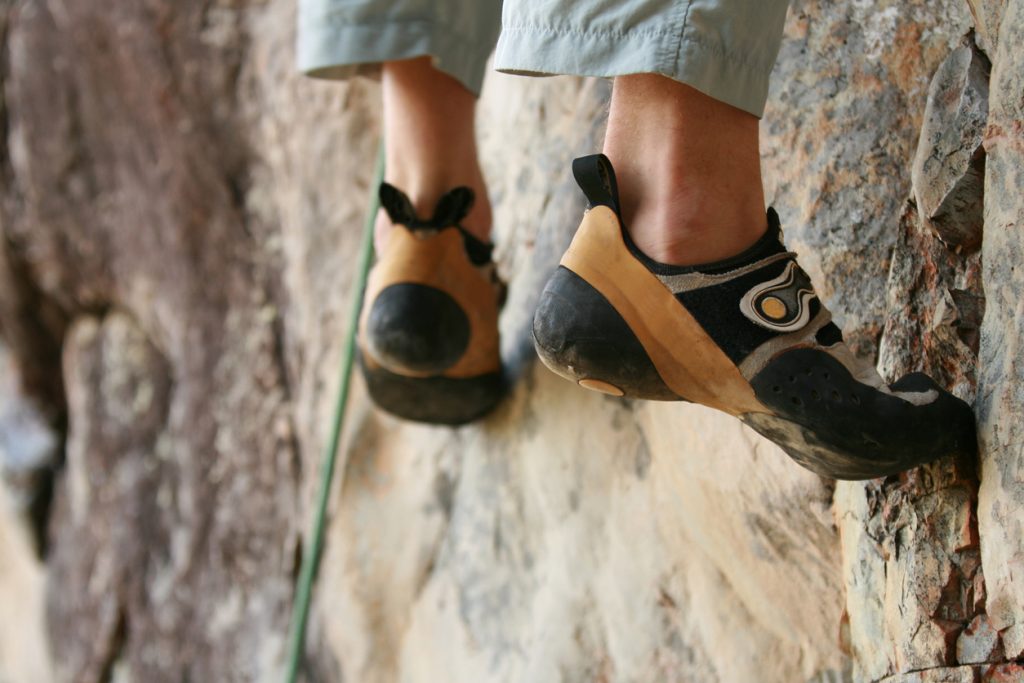
Stepping foot on a wall without climbing shoes is unheard of. They are as closely related to climbing as the racket is to tennis. In short, there is no rock climbing without them.
Climbing shoes are characterised by their tight fit, thin material, rubber soles and outer edges.
These design features all come together to give your foot the best grip on the wall to allow you to stand on holds you otherwise wouldn’t be able to in normal shoes or barefoot.
Buying climbing shoes isn’t simply a case of buying the best shoe on the market.
For one, it’s mostly about subjective preference, and the ‘best’ shoes are often unwearable for a beginner. For this reason, climbing shoes are most often categorised by skill level, closely related to the degree to which the climbing shoe is downturned.
Beginner shoes are relatively flat, with intermediate shoes slightly arched and advanced or ‘aggressive’ shoes arched further still. Advanced climbing shoes are so uncomfortable for general use that it’s common to see climbers taking their shoes off as soon as they’re off the wall.
Advanced climbing shoes are purposefully designed for vertical climbing, so the climber can transfer power through their foot to make better use of small holds.
Achieving this ability takes immense foot strengthening through years of climbing, hence why advanced shoes would be unwearable for a beginner.
When weighing up a pair of climbing shoes, it’s important to try them on and test them out—more than with any other type of shoe. It would help if you ensured the shoe was suitable for your foot shape.
You should also bear in mind that traditional sizing is most likely redundant when choosing a climbing shoe, as you’ll probably be looking for something at least a size smaller than your usual trainers.
Many bouldering gyms have integrated climbing equipment shops, and test holds so that you can try on the shoe and try it out.
If you’re climbing at an advanced level, indoor vs outdoor use might be worth considering. In most instances, beginner and intermediate shoes are suitable in both environments.
Chalk bag
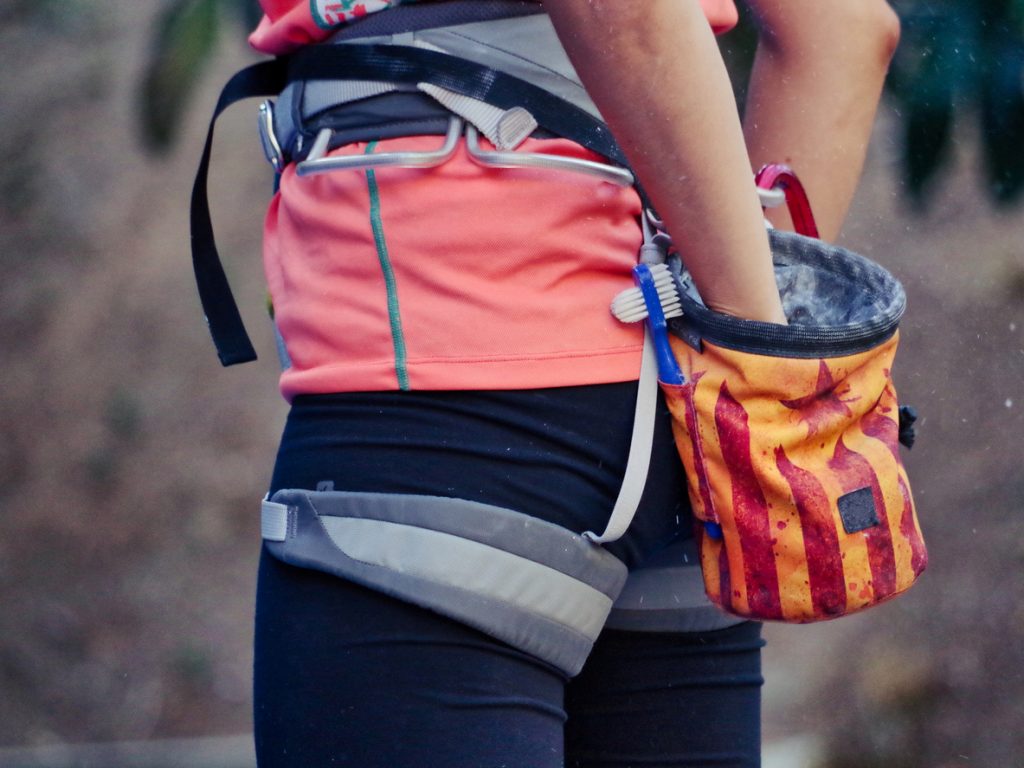
Chalk bags are a pretty straightforward bit of kit. They’re typically a small canvas or synthetic bag designed with an opening to comfortably fit your whole hand, though some are large enough to fit both.
They also come with a side-release buckle and a loop of fabric so that you can attach them to your harness or pants.
There are endless options on the market, all roughly as good as each other, given the simple design. Plus, chalk bags are one of the few pieces of rock climbing equipment that allow you to flex a bit of your personality.
Make sure whatever bag you get is wide enough to fit your hand, suitable for the type of chalk you’re using and tailored to the length of your climb. A cylindrical bag is ideal for longer climbs, whereas a tapered bag is best suited to shorter routes.
Chalk
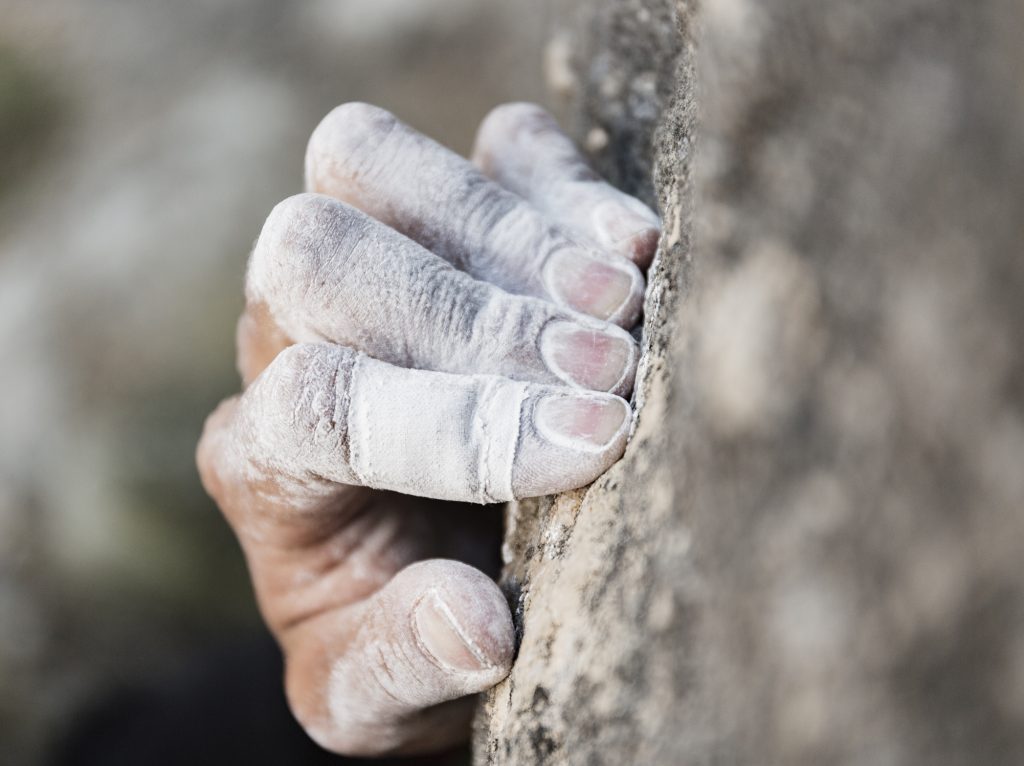
Now you have the chalk bag, you’re going to need some chalk.
As with climbing shoes, it’s unthinkable for rock climbers to climb without chalk. As with the chalk powerlifters and gymnasts use, chalk is used in climbing to increase grip and friction on the surface of your hand by drying sweat and other moisture.
It’s not hard to see why the increased grip is vital when scaling cliff faces using only your hands and feet.
If you’re starting out, any climbing chalk will do the job. That said, you should look for smaller-grained chalk if possible, as it’s sometimes a hassle to break up the clumpier stuff.
You might also want to buy a chalk ball, which is a sealed bag of chalk made of thin fabric.
Many climbers find them less messy than loose chalk, plus they more economically apply chalk to your hands, which means you’ll cause less chalk build-up on the holds, which other climbers will appreciate.
If you’re not a fan of chalk or you’re allergic or prone to dry hands, there are alternatives such as liquid chalk you could use instead. However, this might be more suited to bouldering because if you’re halfway up a route, liquid chalk isn’t half as easy to apply as loose chalk.
Climbing tape
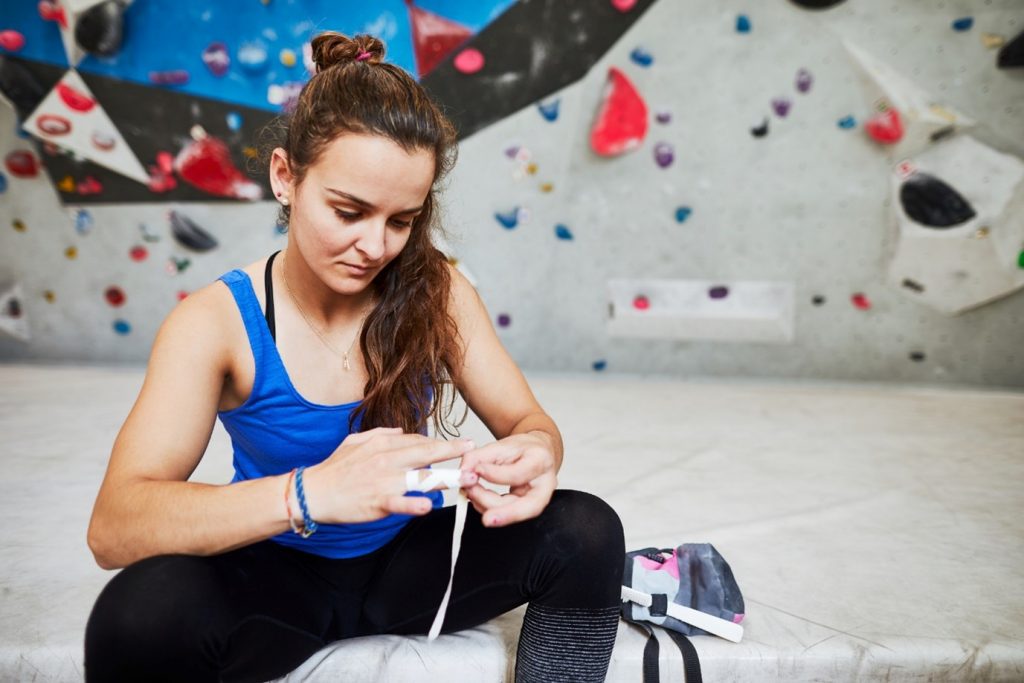
Flappers are the bane of a rock climber’s existence. These are the tears on the pads on your fingers that form when your hands slip off a hold, and they’re so named because of the tiny flap of skin they leave behind.
They can also occur as your skin is gradually abraded over a day’s climbing.
That’s why climbers always keep a roll of climbing tape handy. Some apply it pre-emptively, while others only apply it after flappers occur. Many climbing tapes contain zinc-oxide to help heal the abrasions and decrease the chances of infection, too.
Over time, the pads on your fingers and palms should develop callouses, and you won’t be so prone to flappers. But until then, there’s climbing tape.
Flappers aren’t the only use for climbing tape; many climbers also tape up their fingers to strengthen them and support the small tendons and muscles within the fingers.
Crash mat
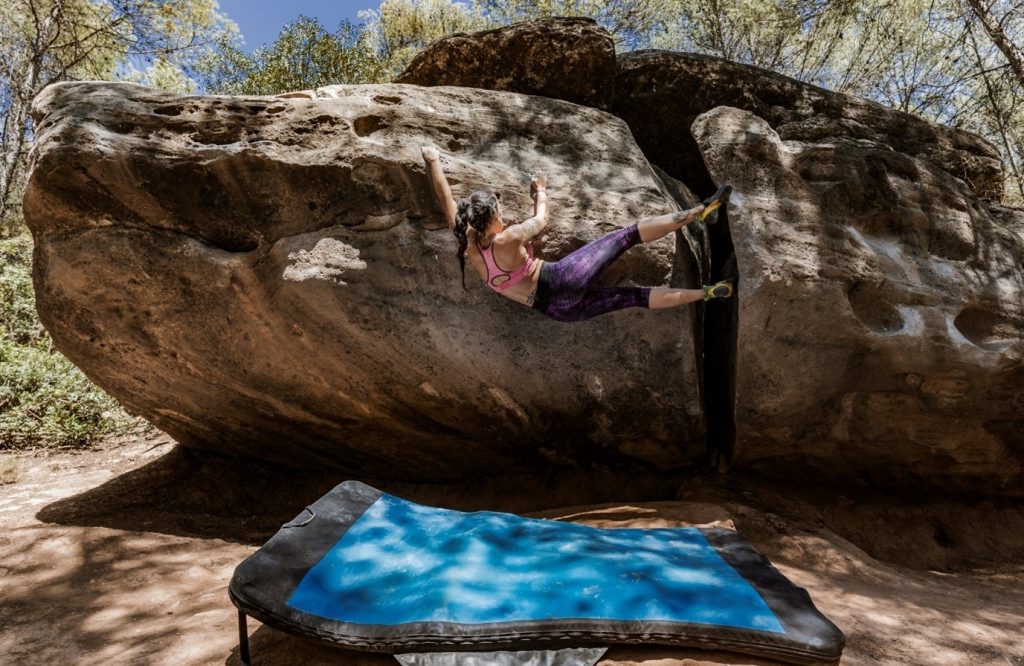
Though a crash mat isn’t required for most types of climbing, it makes the cut for the most important rock climbing gear because bouldering is one of the more dominant forms of climbing. A crash mat is essential if you plan on outdoor bouldering.
Because bouldering is practised without ropes due to the smaller heights involved in the climbs, a crash mat is the only thing between you and the hard floor below. Fifteen feet can still do some damage if you fall from that height.
Ideally, you’ll also want some friends on hand to spot you while you climb, or even multiple mats. As with most rock climbing equipment, you need to look at the bouldering you intend to do when weighing up what type of crash mat to buy.
Specialist rock climbing insurance from Insure4Sport
Whether you’re sending pitches on trad and sport routes or bouldering outdoors, climbing always comes with a risk of injury. Further still, your rock climbing equipment could be damaged, lost, or stolen.
That’s why you might want to consider specialist rock climbing insurance.
This cover will ensure you’re not left out of pocket for your equipment or an injury and covers a range of scenarios.
Find out more about rock climbing insurance or take advantage of our 45% discount today.
Related
The 5 most common rock climbing injuries and how to avoid them



